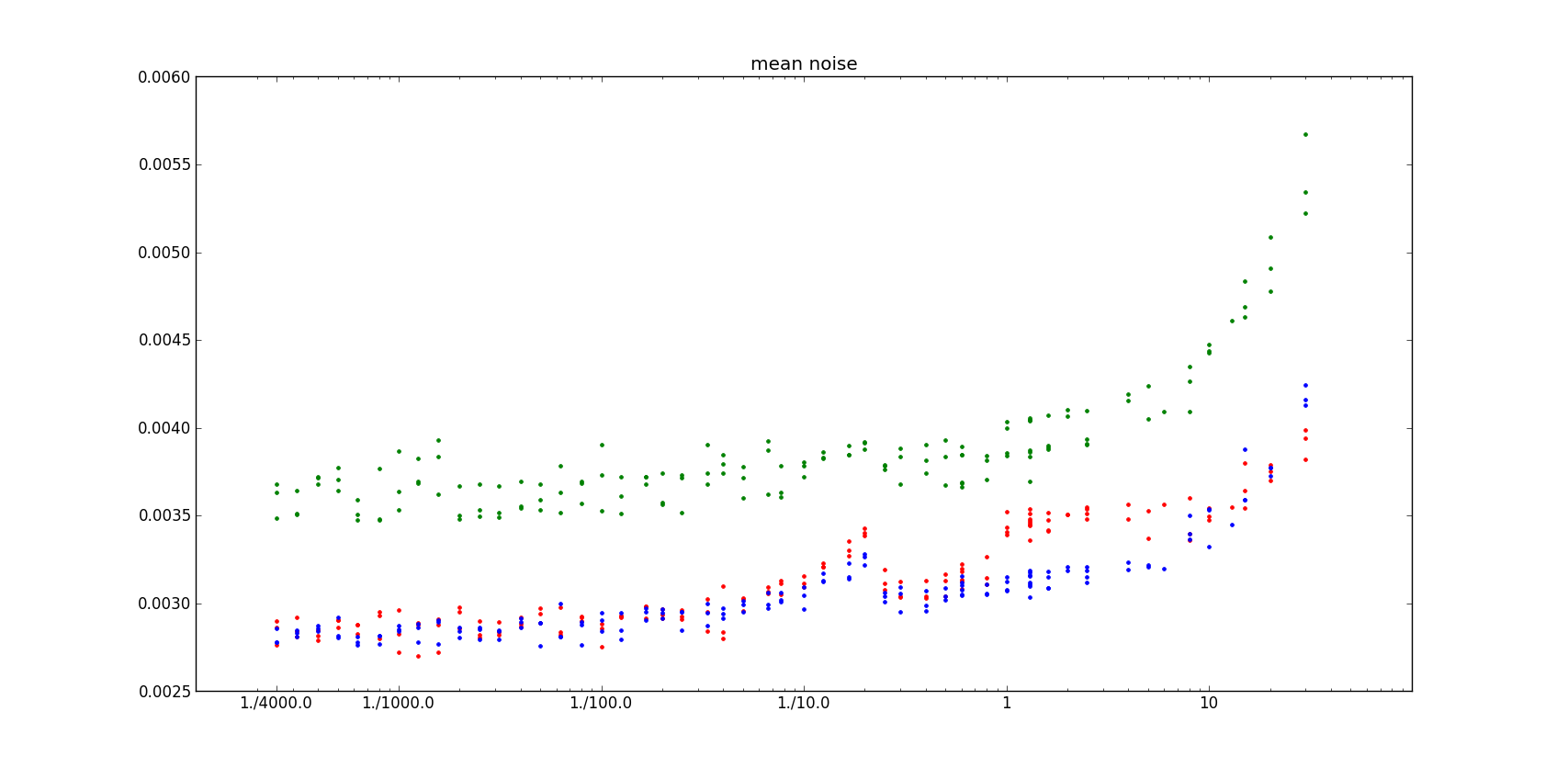First off, you cannot really evaluate any form of noise via JPEG. Compression, even minimal compression, has a measurable/visible impact on the appearance of noise. You can only really evaluate noise with a RAW image.
Just to make sure, you understand that the primary source of image noise is photon shot noise? The noise you are evaluating is camera read noise, noise produced by the electricity passing through the electronic circuits and potentially caused by slight imperfections in the material used in the image sensor. Read noise is generally a fixed aspect of the sensor for a given ISO level, until additional factors such as heat begin to change it. Additionally, to bring signal into the discussion for a moment...read noise is a minuscule fraction of maximum signal, so even at it's peak of 0.009 @ ISO 3200 in your graph, when you slap a strong enough image signal on top of that, the impact of read noise is actually so negligible as to be effectively meaningless. Photon shot noise, or noise in the image signal itself that arises from a weaker signal (compared to the physical full well capacity of a single photo-diode) and a widely distributed inconsistent pattern of photon strikes, is by far the primary contributor to high ISO noise. You would have to dig really deep into the darkest shadows of an ISO 3200 photo to find any indication of read noise.
When you expose up to 1 second, I would assume that the amount of read noise is flat because you aren't accumulating enough heat in the circuit to have an impact. According to your tests, by the time you reach a 1s exposure, heat is probably starting to build up, and does have an impact. As you continue to expose for a longer and longer period of time, the impact of thermal noise on the overall read noise increases.
I am not a CMOS Image Sensor engineer, so I can't get any deeper than that. I would offer, based on the numerous patents I've read that have been published by both Sony and Canon, that there are other reasons why noise increases with exposure time. There are quite a number of noise mitigation patents floating out in the patent-nether that aim to identify, track, and eliminate a variety of possible sources of noise. Most deal with dark current noise, amplifier noise, or A/D converter noise, but there are other sources. Some patents go so far as to cut off the primary power supply to noise mitigation and readout capacitance circuitry during readout to eliminate the potential that dark current from the power supply itself increases noise during readout (I believe that was a Canon patent, and I'm not exactly sure how it works from a voltage or current standpoint.)
Suffice it to say, thermal noise definitely becomes a primary noise producer as exposure passes a certain threshold. I wouldn't have guessed that threshold to be exactly 1s, but your tests would certainly seem to indicate as much.





